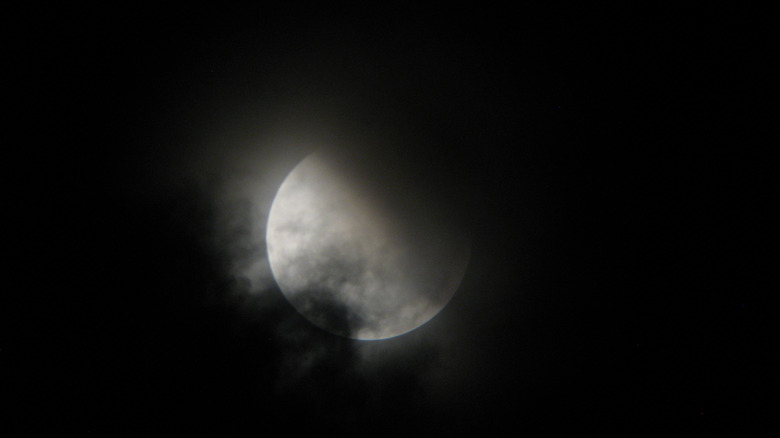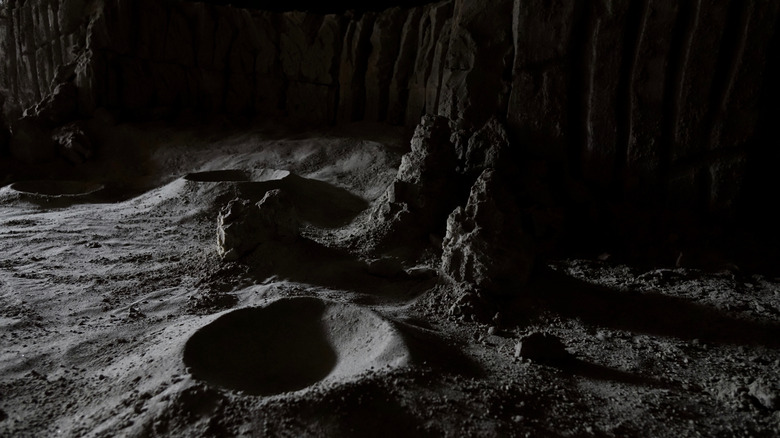What Is On The Far Side Of The Moon?
No one but astronauts have ever seen the dark side of the moon. NASA scientist John Keller says this is because the Earth's gravitational pull keeps the moon "tidally locked" to it (per PBS). The "dark side" of the moon, or the side not visible to the terrestrial eye, has inspired everything from Pink Floyd albums to conspiracies about pyramids and gods. In reality, recent studies analyzing samples obtained from NASA expeditions have shown us that the dark side of the moon isn't quite so fantastical, but it still doesn't look quite like the "dark side" we expected.
Unlike the "moon" you are probably picturing right now, the dark side of the moon is not rugged with craters like the visible side we know so well. This craterous terrain, called "maria," covers about 31% of the "light" side of the moon's surface and lends the moon its familiar pockmarked face (according to Space). In contrast, only 1% of the moon's far side is covered with maria, giving it a much smoother and more luminous appearance.
A Smooth and Unfamiliar Face
According to Space, NASA missions led to the discovery that the far side of the moon has different levels of KREEP (an acronym short for potassium, enriched rock, rare earth elements, and phosphorous). KREEP gives the surface a much lower melting point, which makes the area more prone to eruptions.
A recent study by the Earth‐Life Science Institute at Tokyo Institute of Technology, the University of Florida, the Carnegie Institution for Science, Towson University, the University of New Mexico, and the NASA Johnson Space Center sought a more detailed explanation. According to results published in a Tokyo Institute of Technology press release (per EurekAlert), researchers concluded that some areas of the moon have higher concentrations of radioactively unstable elements. When subject to the radiation from space, these elements begin to decay and heat up the rocks that comprise the moon's surface, potentially explaining the disparity between the moon's two sides. The moon, as planetary scientist Matthieu Laneuville noted in the release, doesn't have wet weather or streams to create erosion, so our early solar system's geologic history is fully on display.
We don't know everything about the far side of the moon, and we still don't know much about outer space. What we do know is that the far side of the moon is smoother, prettier, and was once geologically calmer than the side of our moon we know so well. Otherwise, it's largely the same. Not a lot of craters. And no aliens — yet.

